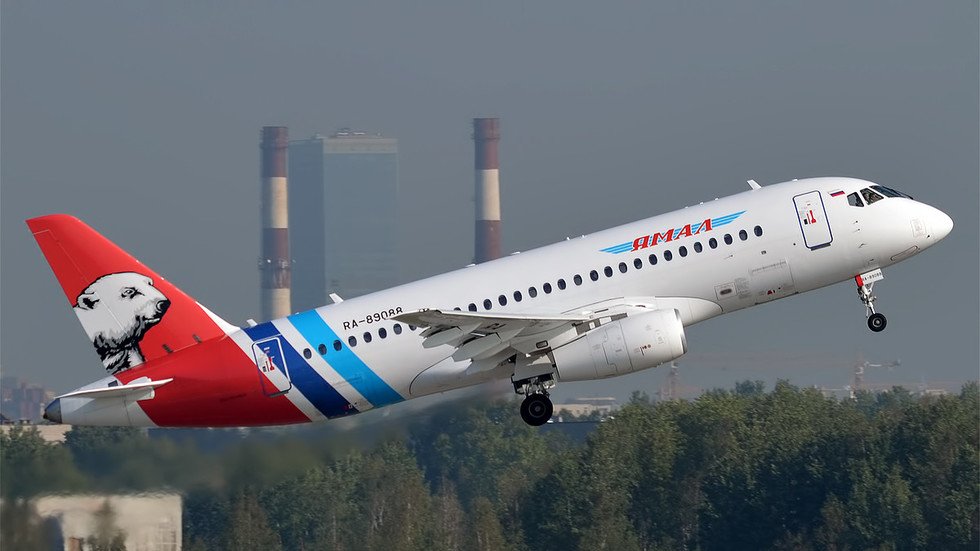Current fallout's from this incident.

 www.rt.com
Russian regional carrier Yamal Airlines will cancel a planned purchase of 10 Sukhoi Superjet 100 aircraft, a day after one of the commuter jets operated by Aeroflot fatally crash-landed at Moscow’s Sheremetyevo Airport.
www.rt.com
Russian regional carrier Yamal Airlines will cancel a planned purchase of 10 Sukhoi Superjet 100 aircraft, a day after one of the commuter jets operated by Aeroflot fatally crash-landed at Moscow’s Sheremetyevo Airport.
Yamal announced its decision on Monday, after Russia’s transport minister declined to ground the aircraft in response to the accident.
Yamal’s decision to drop the plane is said to be unconnected to Sunday’s accident. General Director Vasily Kryuk told Russian news agency TASS that servicing costs on the narrow-body Superjet 100 are too high.
A Superjet 100 belonging to Aeroflot crash-landed in a blaze of fire and smoke at Moscow’s Sheremetyevo International Airport on Sunday.
The plane had departed Sheremetyevo for Murmansk, but pilots declared an emergency on board and returned to Moscow, with the plane bursting into flames upon a hard landing. A total of 40 passengers and one crew member died in the tragedy.
Yamal operates 15 of the planes, and is Russia’s second-largest Superjet 100 operator after national flag carrier Aeroflot.
And a very intersting development.
And a current press release from Hahn Air
Hahn Air Lines’ Chief Development Officer - Flight Operations, confirms participation at Routes Silk Road 2019.
9 May 2019

Russian airline cancels Superjet 100 orders over ‘servicing costs’ day after fatal crash-landing
Russian regional carrier Yamal Airlines will cancel a planned purchase of 10 Sukhoi Superjet 100 aircraft, a day after one of the commuter jets operated by Aeroflot fatally crash-landed at Moscow’s Sheremetyevo Airport.
Yamal announced its decision on Monday, after Russia’s transport minister declined to ground the aircraft in response to the accident.
Yamal’s decision to drop the plane is said to be unconnected to Sunday’s accident. General Director Vasily Kryuk told Russian news agency TASS that servicing costs on the narrow-body Superjet 100 are too high.
A Superjet 100 belonging to Aeroflot crash-landed in a blaze of fire and smoke at Moscow’s Sheremetyevo International Airport on Sunday.
The plane had departed Sheremetyevo for Murmansk, but pilots declared an emergency on board and returned to Moscow, with the plane bursting into flames upon a hard landing. A total of 40 passengers and one crew member died in the tragedy.
Yamal operates 15 of the planes, and is Russia’s second-largest Superjet 100 operator after national flag carrier Aeroflot.
And a very intersting development.
And a current press release from Hahn Air
Hahn Air Lines’ Chief Development Officer - Flight Operations, confirms participation at Routes Silk Road 2019.
9 May 2019
Routes Silk Road 2019, the route development forum for the CIS, Central and Eastern Europe, Middle East and Central Asia, will bring together key decision makers from the region’s airlines, airports and tourism authorities for face-to-face meetings, networking opportunities and the conference programme.
Taking place 15-17 July 2019 in Nur-Sultan, the Routes conference programme will feature talks and panel discussions by senior industry experts. Simon Riha, Chief Development Officer - Flight Operations at Hahn Air Lines, will also take to the stage to discuss “Connecting East to West - hub development, bilaterals with Asia and Europe, and Asian growth”.
Other topics to be addressed over the course of the programme include catering for the Russian market, the latest trends in route development in China, and how small airports can raise their profile. More information about the event can be found here.







